#plankton bloom
Photo
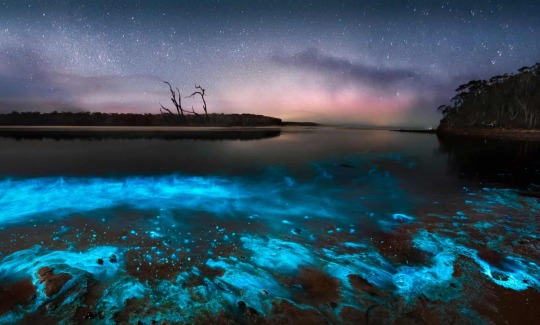
Bioluminescent water usually comes from an algae bloom off plankton, which will glow when it’s disturbed by a wave breaking, or a splash in the water at night.
Photographer Callie Chee
94 notes
·
View notes
Text
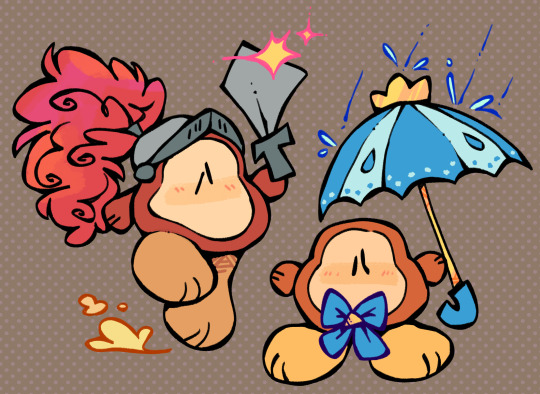
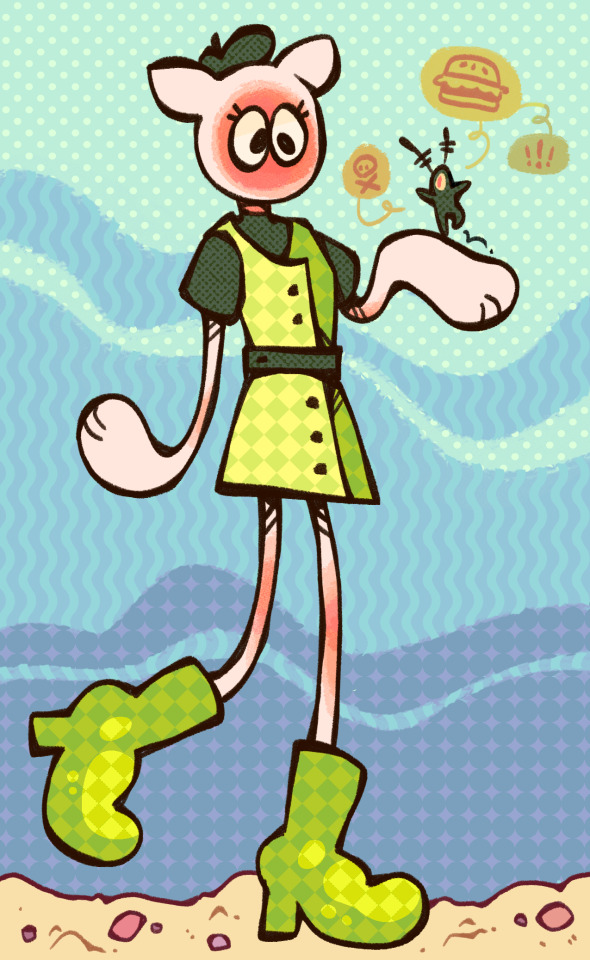

first attacks of the year + a self portrait for bloom <3
umbrella dee & knight dee - celina de lion - my sona
[ID: three digital drawings in a cartoony pop style. The first is of two waddle dees, a red one with a sword and knight’s helmet with a large red fluff jumping forward, and an orange one holding a blue patterned umbrella and a blue bow. The second is of a tall thin anthropomorphic sea creature, with no mouth and two cat ear -like head protrusions. She is pale white with a large round orange section over her face, wearing a dark green beret and undershirt, light green dress and round green boots. She is walking along the sand with plankton from spongebob on her hand, who is exclaiming his plans to her. the third drawing is of op, a white person with short brown hair depicted in a pink and cyan sweater with cat ears, stubble, and flowers in its hair, smiling with its hands on its chin. there is an abstract background with grass, a purple fence and an orange sky with a large yellow sun. End ID]
34 notes
·
View notes
Text

marine bio test tomorrow. am so screwed
#bones talks#i have memorize plankton AND nekton AND parts of a fish AND why a right whale is called a right whale AND phytoplankton blooms AND more!#;-;
0 notes
Text
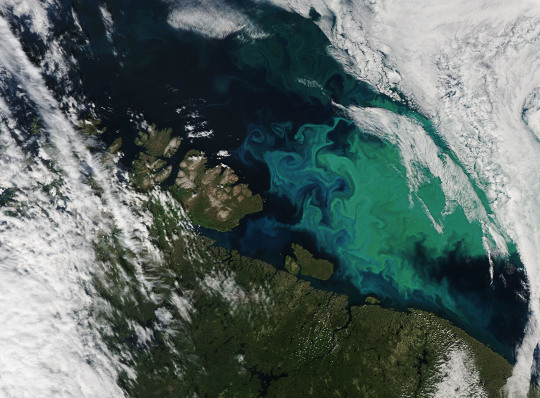
Sharpening Our View of Climate Change with the Plankton, Aerosol, Cloud, ocean Ecosystem Satellite
As our planet warms, Earth’s ocean and atmosphere are changing.
Climate change has a lot of impact on the ocean, from sea level rise to marine heat waves to a loss of biodiversity. Meanwhile, greenhouse gases like carbon dioxide continue to warm our atmosphere.
NASA’s upcoming satellite, PACE, is soon to be on the case!
Set to launch on Feb. 6, 2024, the Plankton, Aerosol, Cloud, ocean Ecosystem (PACE) mission will help us better understand the complex systems driving the global changes that come with a warming climate.

Earth’s ocean is becoming greener due to climate change. PACE will see the ocean in more hues than ever before.
While a single phytoplankton typically can’t be seen with the naked eye, communities of trillions of phytoplankton, called blooms, can be seen from space. Blooms often take on a greenish tinge due to the pigments that phytoplankton (similar to plants on land) use to make energy through photosynthesis.
In a 2023 study, scientists found that portions of the ocean had turned greener because there were more chlorophyll-carrying phytoplankton. PACE has a hyperspectral sensor, the Ocean Color Instrument (OCI), that will be able to discern subtle shifts in hue. This will allow scientists to monitor changes in phytoplankton communities and ocean health overall due to climate change.
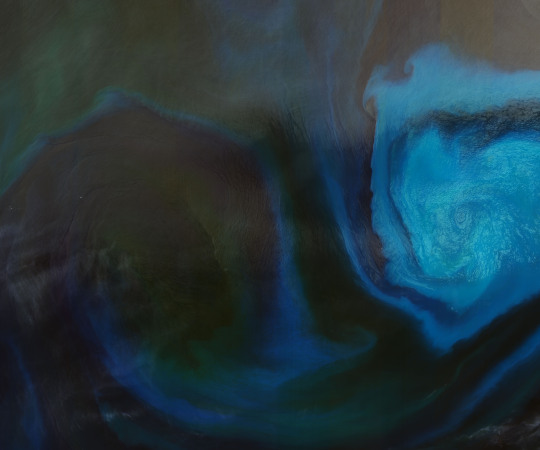
Phytoplankton play a key role in helping the ocean absorb carbon from the atmosphere. PACE will identify different phytoplankton species from space.
With PACE, scientists will be able to tell what phytoplankton communities are present – from space! Before, this could only be done by analyzing a sample of seawater.
Telling “who’s who” in a phytoplankton bloom is key because different phytoplankton play vastly different roles in aquatic ecosystems. They can fuel the food chain and draw down carbon dioxide from the atmosphere to photosynthesize. Some phytoplankton populations capture carbon as they die and sink to the deep ocean; others release the gas back into the atmosphere as they decay near the surface.
Studying these teeny tiny critters from space will help scientists learn how and where phytoplankton are affected by climate change, and how changes in these communities may affect other creatures and ocean ecosystems.

Climate models are one of our most powerful tools to understand how Earth is changing. PACE data will improve the data these models rely on.
The PACE mission will offer important insights on airborne particles of sea salt, smoke, human-made pollutants, and dust – collectively called aerosols – by observing how they interact with light.
With two instruments called polarimeters, SPEXone and HARP2, PACE will allow scientists to measure the size, composition, and abundance of these microscopic particles in our atmosphere. This information is crucial to figuring out how climate and air quality are changing.
PACE data will help scientists answer key climate questions, like how aerosols affect cloud formation or how ice clouds and liquid clouds differ.
It will also enable scientists to examine one of the trickiest components of climate change to model: how clouds and aerosols interact. Once PACE is operational, scientists can replace the estimates currently used to fill data gaps in climate models with measurements from the new satellite.

With a view of the whole planet every two days, PACE will track both microscopic organisms in the ocean and microscopic particles in the atmosphere. PACE’s unique view will help us learn more about the ways climate change is impacting our planet’s ocean and atmosphere.
Stay up to date on the NASA PACE blog, and make sure to follow us on Tumblr for your regular dose of sPACE!
1K notes
·
View notes
Text



Plankton Bloom, 2023, 33x82 inches, hand dyed cotton fabrics, textile discharge print, cotton thread and cotton batting
another experiment with decolorant, this time in layers. each painted plankton was hand quilted around the outline along with a hand dyed thread for seed stitches in the negative space
#plankton#zooplankton#phytoplankton#marine biology#microorganisms#quilt#quilting#fiber art#textiles#sewing#queer artist
967 notes
·
View notes
Text
The tiny Caribbean island of Dominica is creating the world's first marine protected area for one of earth's largest animals: the endangered sperm whale.
Nearly 300 square miles (800 square kilometers) of royal blue waters on the western side of the island nation that serve as key nursing and feeding grounds will be designated as a reserve, the government announced Monday.
"We want to ensure these majestic and highly intelligent animals are safe from harm and continue keeping our waters and our climate healthy," Dominica Prime Minister Roosevelt Skerrit said in a statement.
Scientists say the reserve not only will protect the animals, but it will also help fight climate change.
Sperm whales defecate near the surface because they shut down non-vital functions when they dive to depths of up to 10,000 feet (3,000 meters). As a result, nutrient-rich poop remains along the ocean surface and creates plankton blooms, which capture carbon dioxide in the atmosphere and drag it to the ocean floor when they die. And sperm whales in Dominica are believed to defecate more than whales elsewhere, said Shane Gero, a whale biologist and founder of the Dominica Sperm Whale Project, a research program focused on sperm whales in the eastern Caribbean.
Continue Reading.
213 notes
·
View notes
Text
National Holidays in the Ninja Villages + Bonus
I've had this idea in mind for a while, and now I finally got to write it down. Feel free to use these for your own works. Please tag me so I can read em all! <33
Iwagakure: The Lunar Lights of Gratitude
The moon has a special place in the heart of every Iwa citizen. To them, it is a part of the earth, now observing its mother body from space. So naturally, the spectacle of a blue/super moon is a special occasion in Iwagakure. To honor and greet the moon, which is actually called "daughter" in the earth country's language, large fireworks are organized every new moon after a blue moon. As previously established, the earth country's firework industry is the largest, which Iwa shinobi are very proud of. Lighting the sky on fire and turning night into daytime is the Iwa way of giving back some of the light that the moon gives us at night.

Kirigakure: The Moonshine Sea Festival
Despite the rivalry between the land of earth and the land of water, there is one thing they have in common, which is their spiritual connection to the moon and space. To water country citizens, especially the fishermen, the moon is a protector and guardian of the night, along with the stars. They strengthen the their connection to their biggest source of both faith and fear: the sea. The special climate in the water country, combined with its great biodiversity give a great habitat for biolumescent plankton, turning the sea itself into a starry night sky. It is one of the only pieces of culture that has been preserved, since the celebration itself was founded by the water country's union of fishermen, who don't belong to a particular clan with a kekkei genkai; most of the kekkei genkai wielders in Kiri have been wiped out, along with their culture, traditions and religions.
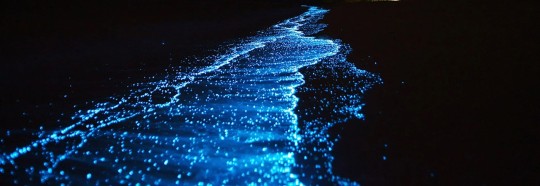
Sunagakure: Winter's Return
The wind country is often ravaged by agonozingly hot summers, sand storms and heat waves are not a rarity in this country. While foreigners might groan and roll their eyes at the thought of the return to cold, foggy winter days, in Sunagakure it is a day for celebration. On the day where the sun stays for the longest, in the middle of the year, a large celebration is held across the nation. The way it is celebrated is different from family to family, and every Suna family is convinced that their way is the right one. Typically, markets are closed the whole day, and any missions rank B or below are halted for the day.

Kumogakure: Whale Festival of Generosity
During winter, whales can be found emigrating along the lightning country's coast line, towards the land of iron. This holiday once came to be to celebrate the whales emigration towards a more prosperous habitat to mate and provide enough food for their young - a truly generous gesture. Over the years, many kumo shinobi have forgotten the old tale behind this festival, and it has turned into more of a mere gift giving occasion. And yet, it is widely popular and celebrated throughout the whole country.
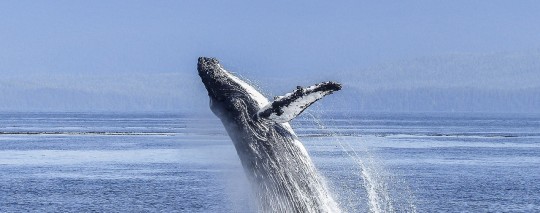
Konoha: Cherry and Plum Blossom Viewing
In Konoha, Hanami is annually celebrated. It is a custom celebrating the transitionary nature of cherry and plum blossoms blooming in spring.
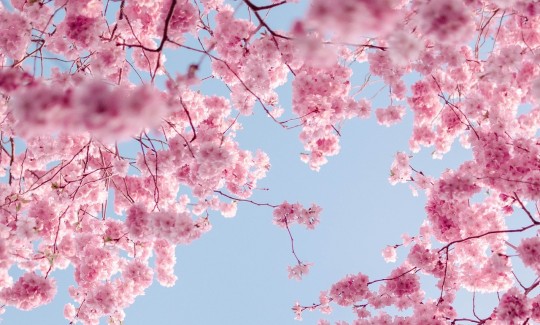
BONUS: Uchiha Clan
Honoring one's ancestors and traditions is of high importance to the Uchiha. Every year, on a clear fall night, the whole clan gathers together to light up little candles using their katon. The tealights are arranged in the Uchiha crest and left to light up the night and the clan share the evening together eating dinner, drinking hot tea and praying at the nakano shrine.

That's all, folks!
#naruto#naruto shippuden#naruto headcanons#naruto scenarios#naruto imagines#naruto fanfiction#headcanons#naruto meta#naruto worldbuilding#worldbuilding#konohagakure#kirigakure#iwagakure#kumogakure#sunagakure#uchiha#uchiha clan
106 notes
·
View notes
Text

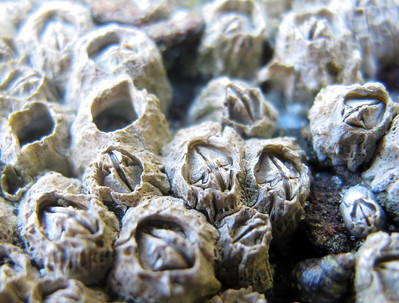

Common Acorn Barnacles on Call
Semibalanus balanoides, more commonly known as the common acorn barnacle or the northern acorn barnacle, is a widespread species of barnacle found all along the Pacific and Atlantic coasts of North America and the intertidal zone of Europe-- though it is notably absent from the Bay of Biscay. Its range is limited by the temperature of the water in which it breeds; in the winter, they require water as cold as 7.2 °C (45.0 °F), but throughout the rest of the year they can tolerate much warmer climates.
Like many barnacle species, S. balanoides is hermaphroditic, meaning it has both male and female reproductive organs. Once the water reaches the optimal temperature, typically in November or December, the barnacles begin to breed. An individual will reach out with a penis that can be up to 7.5 centimetres (3.0 in), and inseminate a nearby barnacle; this process may be repeated up to eight times between a single pair. After insemination, the penis disintegrates to be regrown the following year.
In the meantime, the fertilized barnacle will produce up to 10,000 eggs that are stored in a special sac within the shell cavity. The common acorn barnacle releases its eggs between February and April, in concert with warming waters and the spring algal bloom. The eggs then hatch into miniscule larvae, which spend several weeks feeding on plankton in the water column and going through a series of molts. Following the sixth molt, the larvae stops feeding and seeks out a suitable place on which to anchor itself. Once it has found a surface, the larval barnacle 'crawls' along the surface until it encounters one of its own species. At this point, they will attach themselves with a cement-like glue which is capable of supporting up to 3,200 kg (7,000 lbs) Here, a single northern acorn barnacle may live anywhere from one to seven years.
Adult S. balanoides are identified by the white, six-sided limestone casing with which they protect themselves. However, one unique feature of this species is the way in which they attach themselves to their chosen surfaces; unlike other barnacles, which have a hard calcified shell base, the northern acorn barnacle has a membranous base. Within their shells, they have rather soft bodies, including a set of feathered appendages called cirri with which they use to breathe and collect food.
The common acorn barnacle is a filter feeder, consuming microscopic plankton and bits of detritus from the water column. Though their hard shells deter most predators, adults are vulnerable to other predatory invertebrates like dogwelks, nudibranches, and sea stars, as well as fish like the shanny that are specialist feeders of barnacles.
Conservation status: The common acorn barnacle has not been assessed by the IUCN. The species is extremely common and very resilient, and in fact has been in existence since the Jurassic period. However, rising ocean temperatures may negatively affect their breeding period.
If you like what I do, consider leaving a tip or buying me a kofi!
Photos
Neil DeMaster
Oregon State Parks and Recreation
Kim Hanson via Wikimedia commons
#common acorn barnacle#Balanomorpha#Balanidae#acorn barnacles#barnacles#crustaceans#arthropods#marine arthropods#intertidal arthropods#coastal arthropods#atlantic ocean#pacific ocean#animal facts#biology#zoology
116 notes
·
View notes
Text
The Contestants
Cherik (Professor X/Magneto) - X-Men
Fuffy (Faith Lehane/Buffy Summers) - Buffy the Vampire Slayer
Megop (Optimus Prime/Megatron) - Transformers
Curtwen (Curt Mega/Owen Carvour) - Spies are Forever
Thoschei (The Doctor/The Master) - Doctor Who
Perryshmirtz (Perry the Platypus/Dr. Heinz Doofenshmirtz) - Phineas and Ferb
Catradora (Adora/Catra) - She-Ra and the Princesses of Power
Soukoku (Osamu Dazai/Chuuya Nakahara) - Bungo Stray Dogs
c!TnTDuo (c!Quackity/c!Wilbur Soot) - Dream SMP
Spy/Supervillain - Genghis Khan by Miike Snow
Batman/Joker - Lego Batman
Wrightworth (Phoenix Wright/Miles Edgeworth) - Ace Attorney
Batjokes (Batman/Joker) - Batman
Lawlight (L/Light Yagami) - Death Note
Bowiugi (Bowser/Luigi) - Mario
Stanarrator (Narrator/Stanley) - The Stanley Parable
Kidlaw (Eustass Kid/Trafalgar Law) - One Piece
Shuake (Goro Akechi/Akira Kurusu) - Persona 5
Cuttletavio (Craig Cuttlefish/DJ Octavio) - Splatoon
Gethan (Rupert Giles/Ethan Rayne) - Buffy the Vampire Slayer
Zosan (Roronoa Zoro/Sanji) - One Piece
ChellDOS (Chell/GLaDOS) - Portal
Jesus Christ/Judas Iscariot - The New Testament
Gwensuzie (Gwen Cooper/Suzie Costello) - Torchwood
Krisnix (Phoenix Wright/Kristoph Gavin) - Ace Attorney
Griffguts (Guts/Griffith) - Berserk
Hannigram (Will Graham/Hannibal Lecter) - Hannibal
Ghiralink (Ghirahim/Link) - Legend of Zelda: Skyward Sword
Valvert (Javert/Jean Valjean) - Les Miserables
Abestache (Detective Abe Lincoln/Wilford Warfstache) - Markiplier Cinematic Universe
Sasunaru (Naruto/Sasuke) - Naruto
Jedediah/Octavius - Night at the Museum
Nami/Kalifa - One Piece
Gabv1el (V1/Gabriel) - Ultrakill
Kazumaji (Kazuma Kiryu/Goro Majima) - Yakuza
Zukka (Zuko/Sokka) - Avatar: The Last Airbender
Ineffable Husbands (Aziraphale/Crowley) - Good Omens
Billford (Bill Cipher/Stanford Pines) - Gravity Falls
Evelyn Deavor/Elastigirl - Incredibles 2
Jennifer Check/Needy Lesnicki - Jennifer’s Body
Kigo (Kim Possible/Shego) - Kim Possible
Sportarobbie (Sportacus/Robbie Rotten) - Lazy Town
Swan Queen (Emma Swan/Regina Mills) - Once Upon a Time
Hardenshipping (Magma Leader Maxie/Aqua Leader Archie) -Pokemon OmegaRuby and AlphaSapphire
Westley/Inigo Montoya - Princess Bride
Sonadow (Sonic/Shadow) - Sonic the Hedgehog
Plabs (Plankton/Mr. Krabs) - SpongeBob SquarePants
Kylux (General Armitage Hux/Kylo Ren) - Star Wars
Johnchurch (Merle Highchurch/John Hunger) - The Adventure Zone: Balance
Basigan (Professor Ratigan/Basil of Baker Street) - The Great Mouse Detective
LonelyEyes (Elias Buchard/Peter Lukas) - The Magnus Archives
Johnjack (Jack Harkness/John Hart) - Torchwood
Blicy (Bloom/Icy) - Winx Club
Riddlebat (Batman/The Riddler) - Batman comics
Shin Soukoku (Atsushi Nakajima/Ryuunosuke Akutagawa) - Bungo Stray Dogs
Snowbaz (Baz Pitch/Simon Snow) - Carry On
Komahina (Nagito Komaeda/Hajime Hinata) - Danganronpa
Wonder Woman/Cheetah - DC
Spamvil (Jevil/Spamton) - Deltarune
Rk1000 (Connor/Markus) - Detroit: Become Human
John McClane/Hans Gruber - Die Hard
Fenders (Fenris/Anders) - Dragon Age 2
Vegekaka (Goku/Vegeta) - Dragon Ball Z
Rapple (Apple White/Raven Queen) - Ever After High
Billdip (Bill Cipher/Dipper Pines) - Gravity Falls
Radiostatic (Vox/Alastor) - Hazbin Hotel
Sirdust (Angel Dust/Sir Pretious) - Hazbin Hotel
Fengqing (Feng Xin/Mu Qing) - Heaven Official’s Blessing
Blitzer (Blitzø/Striker) - Helluva Boss
Martha May Whovier/Betty Lou Who - How the Grinch Stole Christmas
ZaDr (Zim/Dib) - Invader Zim
Sarumi (Fushimi Saruhiko/Yata Misaki) - K Project
Metadede (King Dedede/Meta Knight) - Kirby
Gandalf/Sauron - Lord of the Rings
Island Husbands (Ben Linus/John Locke) - Lost
Metromind (Megamind/Metro Man) - Megamind
Sherliam (Sherlock Holmes/William James Moriarty) - Moriarty the Patriot
Bujeet (Buford/Bajeet) - Phineas and Ferb
Grovyle/Dusknoir - Pokemon Mystery Dungeon: Explorers of Time, Darkness, and Sky
Shassie (Shawn Spencer/Carlton “Lassie” Lassiter) - Psych
Rayaari (Raya/Namaari) - Raya and the Last Dragon
Tycutio (Mercutio/Tybalt) - Romeo and Juliet
Sherliam (Sherlock Holmes/James Moriarty) - Sherlock
Obikin (Anakin Skywalker/Obi-Wan Kenobi) - Star Wars
Obimaul (Obi-Wan Kenobi/Darth Maul) - Star Wars
Oncelax (The Onceler/The Lorax) - The Lorax
Owen Harper/Mark Lynch - Torchwood
Lord Hater/Wander - Wander Over Yonder
Gelphie (Elphaba/Galinda) - Wicked
Cruellanita (Cruella de Vil/Anita) - 101 Dalmations
Angelo Lagusa/Nero Vanetti - 91 Days
Discotrain (The Conductor/DJ Grooves) - A Hat in Time
Klapollo (Klavier Gavin/Apollo Justice) - Ace Attorney
Wrightdot (Godot/Phoenix Wright) - Ace Attorney
Kaneda/Tetsuo - Akira
Sydney Bristow/Lauren Reed - Alias
Ellen Ripley/The Xenomorph - Alien
Zadison (Zoe Benson/Madison Montgomery) - American Horror Story: Coven
Sterling Archer/Barry Dylan - Archer
Y’all (The Poll Takers)/Me (The Poll Maker) - askeletonwar
Just Walk Out!/Papyrus - askeletonwar
Londo Mollari/G’kar - Babylon 5
Rampage/Depth Charge - Beast Wars: Transformers
Pinariz (Riz/Pina) - Beastars
Kunieda Aoi/Hildegarde - Beezlebub
Sebagrell (Grell/Sebastian) - Black Butler
Gus Fring/Walter White - Breaking Bad
Spangel (Spike/Angel) - Buffy the Vampire Slayer
Spuffy (Spike/Buffy) - Buffy the Vampire Slayer
Winteriron (Tony Stark/The Winter Soldier) - Captain America: Civil War
Stucky (Steve Rogers/Bucky Barnes) - Captain America: The Winter Soldier
Carulia (Carmen Sandiego/Julia Argent) - Carmen Sandiego
Macavity/Munkustrap - Cats (1998)
Caius Marcius Coriolanus/Tullus Aufidius - Coriolanus
Dean Pelton/Dean Spreck - Community
Shadowghast (Caleb Widogast/Essek Thelyss) - Critical Role
Blumentrio (Caleb Widogast/Eadwulf Grieve/Astrid Becke) -Critical Role
Theopin (Lapin Cadbury/Sir Theobald Gumbar) - D20: A Crown of Candy
Hero/Villain - dannyphantom.exe
Clex (Superman/Lex Luthor) - DC
Babsquinn (Batgirl/Harley Quinn) - DC
Seavil (Jevil/Seam) - Deltarune
Rengoku Kyoujurou/Akaza - Demon Slayer
Mal/Uma - Descendants
Reed800 (Connor/Gavin Reed) - Detroit: Become Human
Ryokira (Akira/Ryo) - Devilman
Maxwil (Maxwell/Wilson) - Don't Starve
Nikki/Mackenzie - Dork Diaries
Gell/Frisky - Dot X
Dr. Horrible/Captain Hammer - Dr. Horrible’s Sing-Along Blog
Count Dracula/Jonathan Harker - Dracula
Joan Watson/Jamie Moriarty - Elementary
Zerxus Ilerez/Asmodeus - Exandria Unlimited: Calamity
Gratsu (Natsu Dragneel/Gray Fullbuster) - Fairy Tail
Gary/John - Faith
Peter Griffin/The Chicken - Family Guy
John Crichton/Scorpius - Farscape
Emiya Archer/Cu Chulainn - Fate Stay Night
Angeal Hewley/Genesis Rhapsodos/Sephiroth - Final Fantasy VII
Cidnero (Nero tol Scaeva/Cid Garlond) - Final Fantasy XIV
Willry (Henry Emily/William Afton) - Five Nights at Freddy’s
Victor Frankenstein/The Monster - Frankenstein
Cure Peach/Eas - Fresh Pretty Cure!
Haikaveh (Alhaitham/Kaveh) - Genshin Impact
Sugio (Sugimoto/Ogata) - Golden Kamuy
Nygmobblepot (Edward Nygma/Oswald Cobblepot) - Gotham
Mabifica (Mabel Pines/Pacifica Northwest) - Gravity Falls
Kagehina (Hinata/Kageyama) - Haikyuu!
151 notes
·
View notes
Text
Animal of the Day!
Weddell Seal (Leptonychotes weddellii)

(Photo from World Atlas)
Conservation Status- Least Concern
Habitat- Southern Ocean
Size (Weight/Length)- 450 kg; 3 m
Diet- Squid; Fish; Shrimp
Cool Facts- The Weddell seal is one of the largest seal species, packing on 5 centimeters of blubber all over their body accounting for almost a third of their body weight. Well, when you live in the coldest place in the world that fat comes in handy. Resting on ice flows in the summer, Weddell seals raise their pups and feast on plentiful fish thanks to plankton blooms. In the winter, the air chill is -60 Celsius with winds over 300 kilometers per hour. Weddell seals stay in the considerably warmer water, a crisp -2 degrees Celsius. Using their teeth, they grind back breathing holes to prevent them from icing over and use their powerful snout to break through thinner ice. Luckily, after the banning of commercial sealing in the 1980s, Weddell seal populations have bounced back to a stable level.
Rating- 11/10 (They change their vocalization to try and talk to humans.)
#Animal of the day#Animals#Mammals#Seals#Marine mammals#Tuesday#January 17#Weddell seal#biology#science#conservation#the more you know
320 notes
·
View notes
Text




Marine creatures like some fish, squid, tiny crustaceans and algae produce bioluminescence to either confuse predators, attract prey or even lure potential mates.
We humans can witness this natural phenomenon when there is lots of bioluminescence in the water, usually from an algae bloom of plankton. The bioluminescent sea will glow when it’s disturbed by a wave breaking or a splash in the water at night.
Algae bloom sea sparkle events are caused by calm and warm sea conditions. But you can see specks of bioluminescence when it’s created nearby by a light-producing marine creature.
If you enjoyed this post, please give it a ❤️ and check out @scienceisdope for more science and daily facts.
All the content by Jordan Robins
122 notes
·
View notes
Text
Welcome back to the series where I go over the real-world origins of all aquatic Pokémon. As we all know, Hoenn has too much water and there it also has a lot of aquatic Pokémon to go over. For previous entries see Gen I part 1, gen I part 2 and gen II. For my previous series where I went over the origins of all fish Pokémon, see here. For the fish of generation III see here. I’ll be going over the starters and legendaries on their own so no Mudkip line or Kyogre today.
We begin with what I’m astonished to say is still the only grass/water line 6 generations later, the Lotad line. Seriously, this should be a type combination rich with inspirations to drag from: sea grass, algal blooms, mangroves, seaweed, lotus, kelpies, all great options for water/grass types. The Lotad line is based on lily pads, the leaves of the water lily plant. These plants grow in shallow water and are famous for their round, often dish-shaped leaves that rest on the surface of the water. The pads are strong enough to support small animals like frogs and birds, which is the basis of Lotad acting as a ferry for small Pokémon.
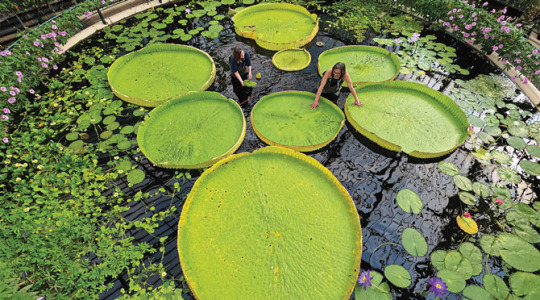
(Image: giant lily pads with a human for scale)
The other main basis for the line is the kappa, a creature of Japanese folklore. Kappas are aquatic humanoids with duck-like bills and dishes on their heads that hold water. The lily pad of the Lotad line acts as the dish, though unlike the kappa, the Pokémon will not become powerless if their dishes are emptied of water. Kappas are malicious beings that grab people and pull them underwater to drown. Lombre’s prankster behavior is a toned-down version of the kappa’s.
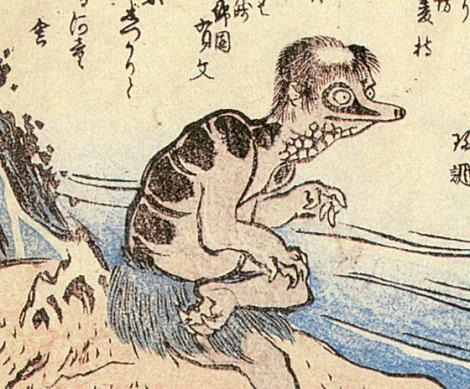
(image: a depiction of a kappa)
Lombre and Ludicolo are also based on stereotypical depictions of Mexicans, with the lily pads looking like sombreros and their dancing behavior being similar to Mexican folk dances or mariachi bands. Ludicolo also looks like a giant pineapple.
The Wingull line are based off of seabirds, with Wingull being a seagull and Pelipper being a pelican. Seabirds rely on having access to water (or in the case of seagulls, the local landfill) and feed largely on fish or other aquatic animals. Wingull has some other influences, with the size of its wings and method of gliding on air currents being similar to an albatross and it building nests on sheer cliffs is a refence to many species of seabird, including murres, kittiwakes, and Atlantic puffins. Pelipper is a pelican, seabirds famous for their large throat pouch that can be used to scoop up and carry lots of food. Pelipper is also based on boats. It can float on the surface of the water and its silhouette in profile looks like a boat, with its beak being the hull and its head being a deckhouse
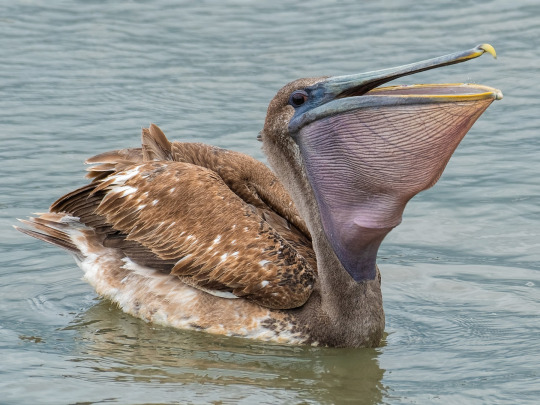
(Image: a pelican with its throat pouch visible)
Surskit is most directly based on water striders, long-legged insects who have their weight distributed over their long legs to lets them stand or skate around on the surface of the water. Surskit being an aquatic first-stage that evolves to the bug/flying Masquerain is a reference to many species of insect that have an aquatic larval stage that metamorphoses into a flying adult stage, such as mayflies, caddisflies, and dragonflies.

(Image: a water strider making a mockery of us gravity-bound mortals standing on the water)
Wailmer and Wailord are, of course, based on whales. Specifically baleen whales, who have replaced their teeth with thin plates of baleen that filter seawater so the whale can feed on plankton and small animals. Even more specifically, they are based on blue whales, as evidenced by their blue coloration and sheer size, with Wailord being the largest normal Pokémon and the blue whale being the largest animal to ever exist on Earth. Both stages are also based on inflatable objects, Wailmer being a beach ball and Wailord being a blimp, which is referenced in their species name of Ball Whale and Float Whale Pokémon and their very low weights for their sizes. Wailord also looks a lot like a submarine. Wailord can leap out of the water and splash down, a behavior known as breaching that is most commonly observed in humpback whales. They are also social animals, living in pods like many real whale species. Its ability to dive incredibly deep on one breath is a reference to many whale species, perhaps most famously the sperm whale.

(Image: a blue whale: the absolutest of units)
Corphish and Crawdaunt are based on crayfish (or crawdads if you’re an infidel), freshwater crustaceans that look very similar to (and are related to) lobsters. In many of their Pokedex entries, the line are said to be an invasive species that are outcompeting the native wildlife. Because of this and their red and orange colors, the line are probably based on the red swamp crayfish, a species native to the southern United States and northern Mexico that have become invasive in many other parts of the world. Their tendency to drive off native species and live in poor-quality habitats are often traits associated with invasive species. The sheer size of the line may also draw from extremely large crayfish like the Tasmanian crayfish, or from cooked lobsters. Crawdaunt seems to display batesian mimicry. This is an adaptation where a species mimics another to avoid predation. In Crawdaunt’s case, the star on its head and zig-zags on its shell make it look like the head of a shiny Sharpedo.

(image: a red swamp crayfish)
The Hoenn fossils might be my favorite as they have both the obscure origins of the earlier-gen fossils with more diverse pypings than the Kanto fossils. Both lines are based on aquatic animals and lived in water despite neither being water-type. Lileep and Cradily are the fossil line based on crinoids and may also draw inspiration from sea anemones. Both are sessile species with a central stalk and a flower-like “head” ringed with flexible “petals”. The similarity to plants is why the live are grass-type. Crinoids are still alive today, but they seem to have been more abundant in the past and are very common fossil finds, hence the line being fossils. Cradily is also called the Barnacle Pokémon, but other than being a sessile marine animal, it has no similarity to barnacles.

(image: a fossil reconstruction of a crinoid)
Anorinth and Armaldo are based on some of the oldest predators we have evidence for: the anomalocaris. They were a genus of predatory (with some filter-feeders) crustaceans with stalked compound eyes and two large, grasping appendages attached to the head that swam with several hard plates emerging from the side. They were enormous for their time and a few species were likely among the earliest apex predators. While the anomalocarids likely never lived to see life emerge on land, Armaldo clearly did as it can go onto land itself. It retains some of its anomalocaris traits but also gains a lot of dinosaur traits. Its upright posture with dragging tail is based on outdated reconstructions of theropods while the thagomizer on its tail comes from a stegosaurus.

(image: anomalocaris paleoart. source)
I covered Feebas in my fish Pokémon series, but not Milotic. This is because Milotic is a sea serpent, though a much more gentle and benevolent take on see serpents than Gyarados. It also draws from mermaids with its pale upper body, scaly lower body, and great beauty.

(Image: A painting of a mermaid by John William Waterhouse)
Lore on mermaids is very varied, but some accounts have them as shy and gentle beings, fitting Milotic’s calm temperament and tendency to quell violent hearts. Milotic also has similarities to oarfish, which are very long, slender fish that are believed to have played a role in inspiring sea serpent legends. Like Milotic, oarfish are very large but are not violent and are harmless to humans.

(image: a fisherman with a juvenile oarfish. Yes, that's a juvenile. They get huge)
The weak and ugly Feebass evolving into the beautiful Milotic is also a reference to the story of the ugly duckling.
The spheal line are all pinniped pals, specifically based on seals, sea lions, and walruses found in the arctic ocean. Spheal and Sealeo draw from seals and sea lions (aka furred seals) due to their furry bodies ( a sea lion trait) and lack of proper hind limbs (a seal trait). They are also based on old circus acts using sea lions where the animal balances a ball on its nose. In this case Spheal is the ball.
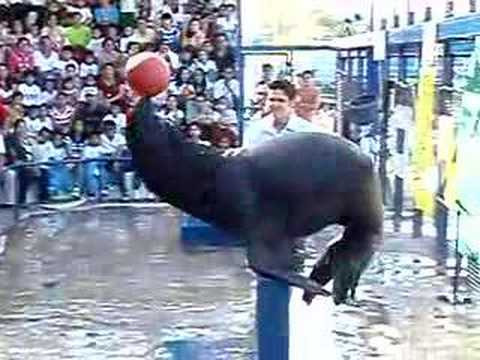
(Image: a screenshot of a youtube video showing a sea lion balancing a ball on its nose)
Spheal is stated to be a poor swimmer, which is likely a reference to how juvenile seals and sea lions can’t immediately swim and must rely on their mother’s care until they can survive on their own. Walrein goes from seal and sea lion to walrus, pinnipeds in their own family that are famous for their great size and prominent tusks.

(image: a walrus chilling on the beach)
Clamperl is still one of the weirder pokemon as I still don’t have any explanation for why a bivalve turns into eels. The only guess I have is that maybe its pearls isn’t actually a pearl but rather a fish egg laid by one of its adult forms in the shell of an unknown Pokémon. Oysters are the bivalves most famous for making pearls, though others can do so as well. Its size and shape comes from the giant clam. There are actually several species of giant clam but the largest is Tridacna gigas, the largest known specimen of which had a shell measuring 137 cm. They can get so large thanks to a symbiotic relationship with algae living in their bodies, which provide extra energy in exchange for protection. There are stories of giant clams clamping shut on people’s limbs and drowning them, but this is most likely not true as they close very slowly, many can’t even close all the way, and they only close for defense. A giant clam couldn’t even eat somebody, they feed on plankton.

(image: a giant clam)
#pokemon#pokemon biology#pokemon lore#marine biology#freshwater biology#aquatic biology#zoology#animals#animal facts#lotad#lombre#ludicolo#wingull#pelipper#surskit#wailmer#wailord#corphish#crawdaunt#lileep#cradily#anorith#armaldo#milotic#spheal#sealeo#walrein#clamperl#lily pads#kappa
39 notes
·
View notes
Text
What are Phytoplankton and Why Are They Important?
Breathe deep… and thank phytoplankton.
Why? Like plants on land, these microscopic creatures capture energy from the sun and carbon from the atmosphere to produce oxygen.

Phytoplankton are microscopic organisms that live in watery environments, both salty and fresh. Though tiny, these creatures are the foundation of the aquatic food chain. They not only sustain healthy aquatic ecosystems, they also provide important clues on climate change.
Let’s explore what these creatures are and why they are important for NASA research.
Phytoplankton are diverse
Phytoplankton are an extremely diversified group of organisms, varying from photosynthesizing bacteria, e.g. cyanobacteria, to diatoms, to chalk-coated coccolithophores. Studying this incredibly diverse group is key to understanding the health - and future - of our ocean and life on earth.

Their growth depends on the availability of carbon dioxide, sunlight and nutrients. Like land plants, these creatures require nutrients such as nitrate, phosphate, silicate, and calcium at various levels. When conditions are right, populations can grow explosively, a phenomenon known as a bloom.
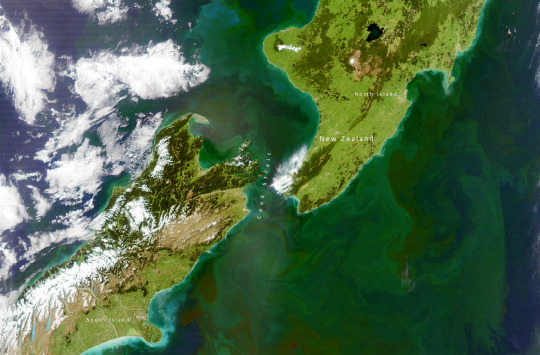
Phytoplankton blooms in the South Pacific Ocean with sediment re-suspended from the ocean floor by waves and tides along much of the New Zealand coastline.
Phytoplankton are Foundational
Phytoplankton are the foundation of the aquatic food web, feeding everything from microscopic, animal-like zooplankton to multi-ton whales. Certain species of phytoplankton produce powerful biotoxins that can kill marine life and people who eat contaminated seafood.

Phytoplankton are Part of the Carbon Cycle
Phytoplankton play an important part in the flow of carbon dioxide from the atmosphere into the ocean. Carbon dioxide is consumed during photosynthesis, with carbon being incorporated in the phytoplankton, and as phytoplankton sink a portion of that carbon makes its way into the deep ocean (far away from the atmosphere).
Changes in the growth of phytoplankton may affect atmospheric carbon dioxide concentrations, which impact climate and global surface temperatures. NASA field campaigns like EXPORTS are helping to understand the ocean's impact in terms of storing carbon dioxide.

Phytoplankton are Key to Understanding a Changing Ocean
NASA studies phytoplankton in different ways with satellites, instruments, and ships. Upcoming missions like Plankton, Aerosol, Cloud, ocean Ecosystem (PACE) - set to launch Jan. 2024 - will reveal interactions between the ocean and atmosphere. This includes how they exchange carbon dioxide and how atmospheric aerosols might fuel phytoplankton growth in the ocean.
Information collected by PACE, especially about changes in plankton populations, will be available to researchers all over the world. See how this data will be used.
youtube
The Ocean Color Instrument (OCI) is integrated onto the PACE spacecraft in the cleanroom at Goddard Space Flight Center. Credit: NASA
1K notes
·
View notes
Text

Welcome to the Zoo (plankton) Jellyfish (Clytia sp. and Neoturris sp.), Shetland, Scotland
‘One night in Shetland, I came face to face with plankton on a scale unlike anything I had experienced before, snorkelling amidst a plankton bloom so thick that at times I was unable to see through it. To the naked eye, it looks like a million peach-coloured spheres, as if the contents of a beanbag had spilled over the sea, but my macro lens reveals a mass of tiny organisms. This plankton soup has attracted an army of jellyfish, who feast upon the buffet of miniature life’
Photograph: Henley Spiers
British Wildlife Photography Awards
#henley spiers#photographer#british wildlife photography awards#plankton#jellyfish#clytia sp#neoturris sp#shetland#scotland#nature#marine
29 notes
·
View notes
Text
So I’ve decided every once in a while I’m going to make one really long post on something I’m interested in and today it’s my favorite animal: The Jellyfish (technically my favorite is the Black Sea Nettle but I have many close seconds)
My personal favorite thing about jellyfish is how absolutely GORGEOUS they are I mean take a look at this BEAUTY

(black sea nettle)
They look almost like fabric floating through the ocean and it’s honestly quite fantastic.
While some people don’t like jellyfish because of them ya know stinging you, not all jellyfish sting you!!! A great example is the moon jelly, which is completely harmless to humans! (Also super adorable picture below)

Another common misinformation spread about these guys is about Man O War, which are misidentified as jellyfish, though they are actually Siphonophore! (A colony of many smaller critters) Not only that, but Man O War aren’t as dangerous as people believe they are! I often see them confused with a real and extremely dangerous jelly, the Box Jellyfish.
One more fun (not really) fact about jellies is that they actually are a major issue with some environmental issues and with destroying fisheries. Pollution and chemical runoff into later has caused huge jelly blooms, which can take over fisheries, and cause major issues. While I adore jellies I’ll be the first to say that some of them are causing major harm to the environment and the population of some fish. (List of sources below!)
I’ll probably talk more about them in the future as I adore jellyfish so much. Anyways, theres my infodump! I hope you enjoyed it!
#shadowistrans#jellyfish#black sea nettle jellyfish#marine biology#marine science#infodump#ocean#ocean conservation#i love the ocean#fish
60 notes
·
View notes
Text
Luming: Lanterns of Fish

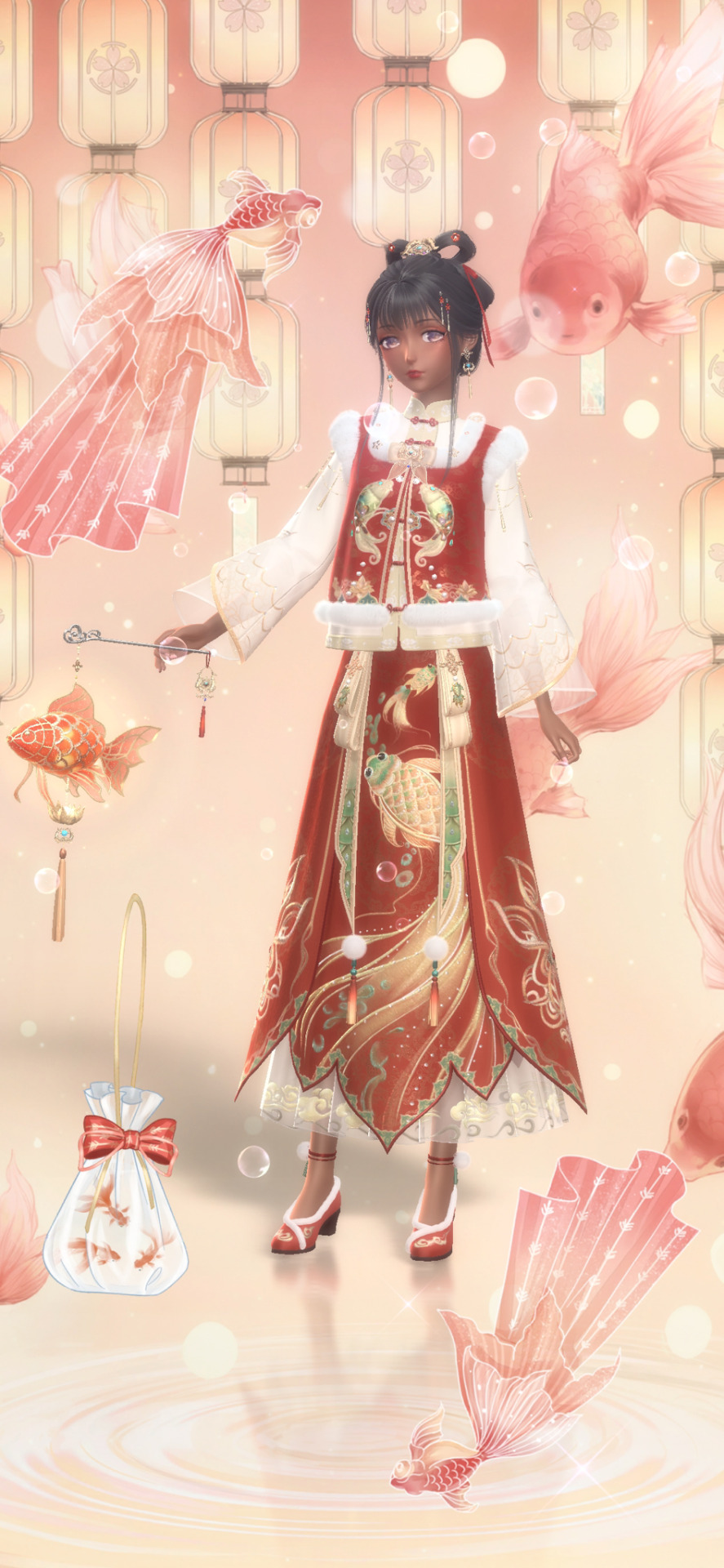
Designer's Reflection: Lanterns of Fish
Obtained: Blessed Blossoms top-up
Rarity: SSR
Attribute: Green/Fresh
Awakened Suit: Lanterns of Spring
Story - transcripts from Designer's Reflection
Chapter 1 - Fish in Yue
Chapter 2 - Fish Lantern Wish
Chapter 3 - Glittering Night
Chapter 4 - Awaiting Bloom
Story - summarized
Luming is on a mission to fulfill a wish in Yue Prefecture City. One small problem: the wish belongs to a goldfish, and he has no idea where to start.
He gets a fish lantern to store the Wish Lantern in while he searches. The marketplace is filled with hot, sweet cakes and passionate storytellers, and he runs into you, the player. The two of you decide to fulfill the wish together.
The Wish Lantern guides him to the nearby pond where the fish used to live. Luming finds out that someone had gathered fish from the pond earlier this morning to sell at the market.
Finally, they find the right vendor... but someone just bought the last goldfish. Luming hurries to catch up with the family. The little girl with the goldfish sees the bright lantern that Luming has. She offers her fish for the lantern.
He gladly accepts. As the family walks away, the lantern inside dissolves into stardust. The wish is almost complete. You and Luming return to the pond and release the goldfish into the water. It reunites with its old friend, a piece of alga floating on the surface.
The both of you return to the festival, determined to enjoy the snacks and the entertainment. One such play you pass is Qin Yi's play about sacrificing a goldfish to be accepted by others. He spots you two in the crowd, and he swears he saw a goldfish.
Connections
-We met Luming during the first Chinese New Year event, Wishes on the Cloud. It was the first time he was able to leave the Lake of Wishes, and we learn more about his birth, existence, and job in his Reflection for Cloud Benediction.
-Goldfish are usually a good omen, but in Qin Yi's memories for Mind Maze 3, he ended up killing his beloved pet fish in order to convince the Qin family to take him in as their "long-lost son."
-The story of the goldfish reuniting with the pond alga parallels the story of Lingwu the Tiger and Yuntan the Flower: two friends promise to meet each other again later, and encounter obstacles along the way.
Fun Facts
-"Yue" means moon, and it's pronounced "yuAY" (all one syllable).
-Alga is the singular of "algae," and it encompasses all aquatic, photosynthetic organisms, from plankton to kelp. Algae are neither plants nor animals, but instead protists.
#luming#shining nikki#lanterns of fish#ssr designer#fresh#green attribute#top up#new year#chinese new year#cny#yue#alga#algae#friend#fish#goldfish#wish#qin yi#promise#designer's reflection#blessed blossoms
8 notes
·
View notes